
Blue jays are colorful birds and members of the Corvidae family and the Aves class. They are closely related to crows and can be found across North America. These birds have quite a reputation amongst Americans and have been featured several times in European folklore.
In this article, we’ll look in-depth at 10 incredible facts about the blue jay.
1. Blue Jays Are Not Exactly Blue
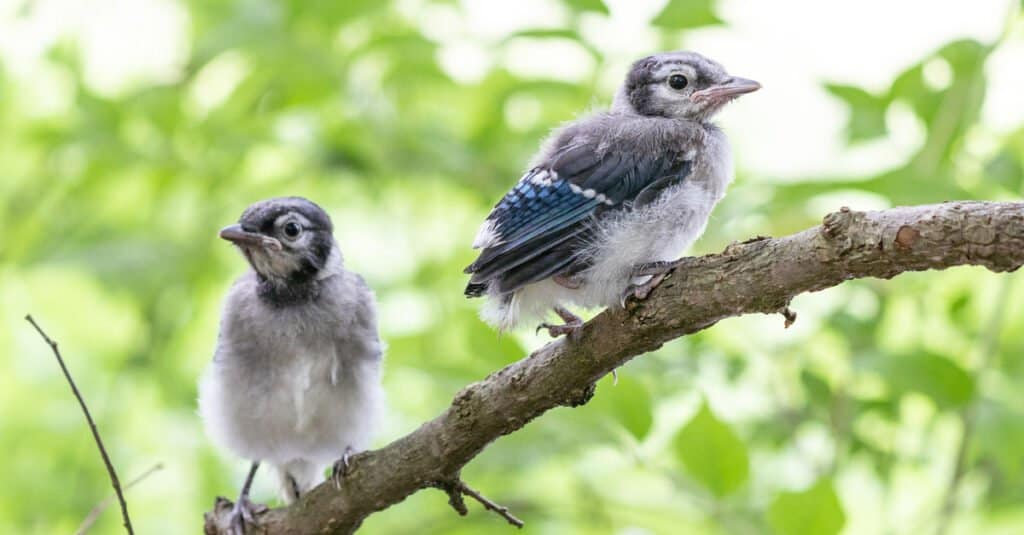
Blue jays have brown-colored melanin.
©Amy Lutz/Shutterstock.com
Blue jays are called blue jays because they have a seemingly blue color which is rare in most animals. However, they are not actually blue, at least not in a purely scientific sense. Blue jays have brown-colored melanin, but the brown is randomly distributed across the entire body so that when light shines on them, the feathers “become” blue.
2. Blue Jays Are Sexually Monomorphic
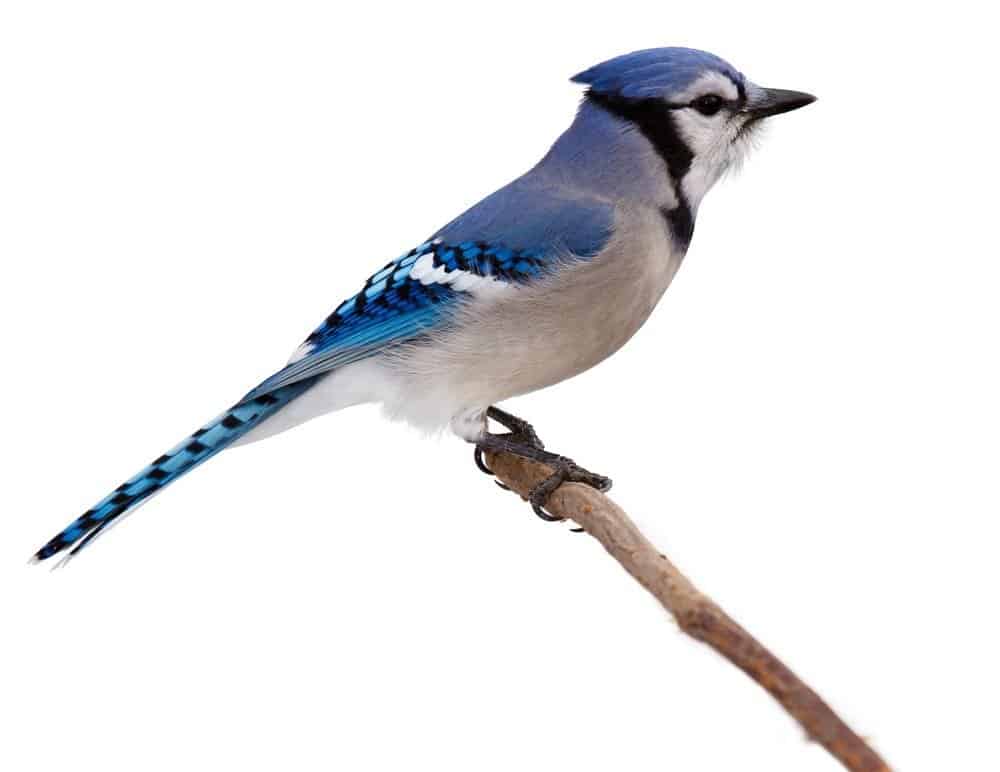
Male and female blue jays are the same size and look the same.
©Mike Truchon/Shutterstock.com
Blue jays have sexual monomorphism, unlike the sexual dimorphism in most other birds. This means that both male and female blue jays look almost the same. Both have similar plumage, making it virtually impossible for a layperson to tell them apart.
One difference between male and female blue jays, however, is that the males are usually bigger. The only other way to tell them apart would be a meticulous observation of their mating and nesting behaviors.
3. Blue Jays Make Warning Sounds To Alert Other Birds
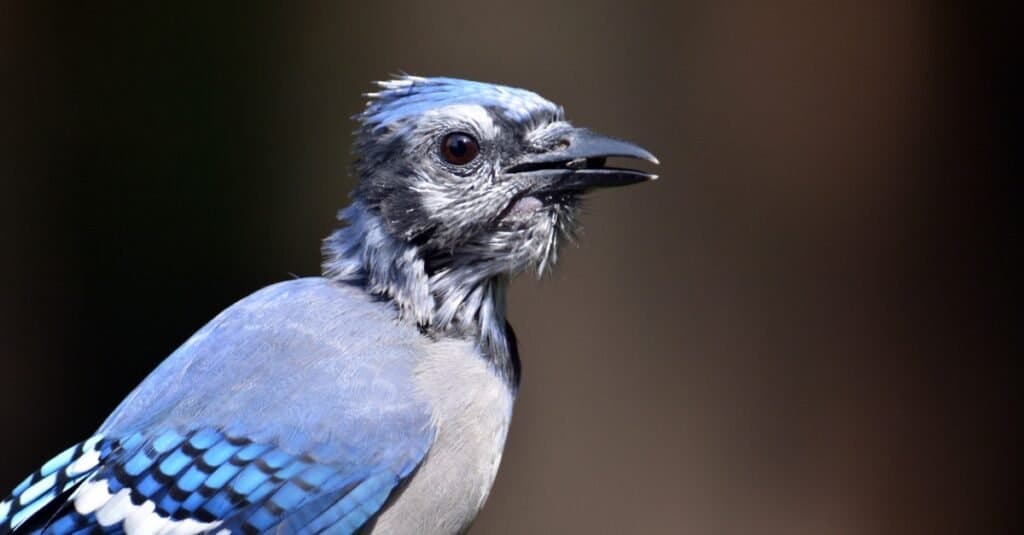
Blue jays are experts at mimicking, and they sometimes put this gift to good use.
©iStock.com/Carol Hamilton
Blue jays are what you could call a natural flying alarm system. They are experts at mimicking, and they sometimes put this gift to good, benevolent use. They would often alert other birds of the presence or proximity of predators by mimicking hawk sounds so other birds could flee for their lives before anything dangerous happened.
Some researchers have also observed blue jays making kitten sounds to scare off other birds from foraging spaces. Pretty smart and sly, don’t you think?
Blue jays in captivity often try to mimic human speech, but let’s just say their accuracy in this aspect is below par.
4. Blue Jays Are Omnivorous
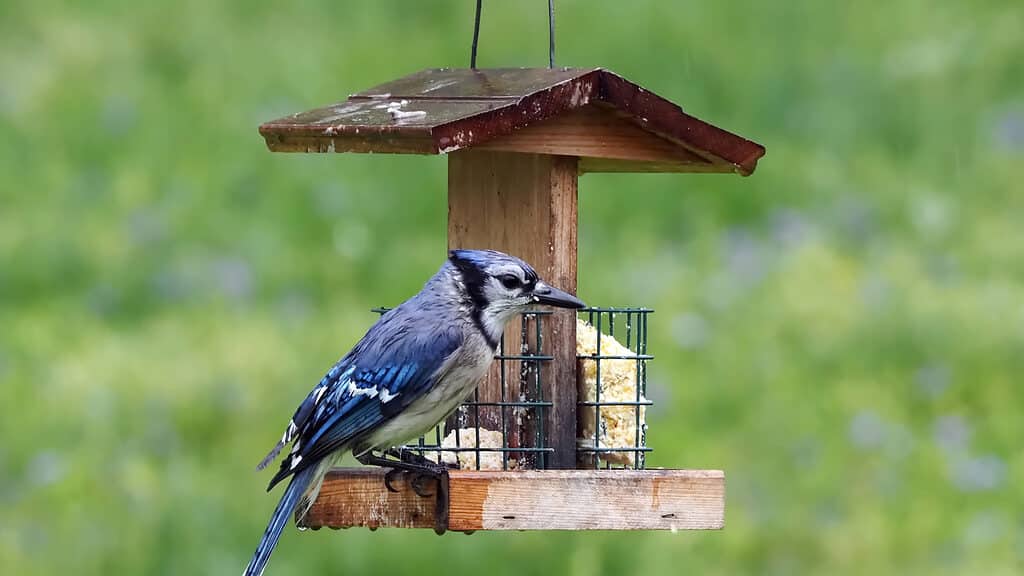
Blue jays eat nuts, seeds, and insects.
©iStock.com/Edward Palm
Blue jays have an omnivorous diet, which means they eat both plants and animals alike. Most of their diet includes nuts, acorns, seeds, grasshoppers, beetles, ants, nestlings, and eggs, amongst many others.
5. Blue Jays Have A Common Practice Known As “Anting”
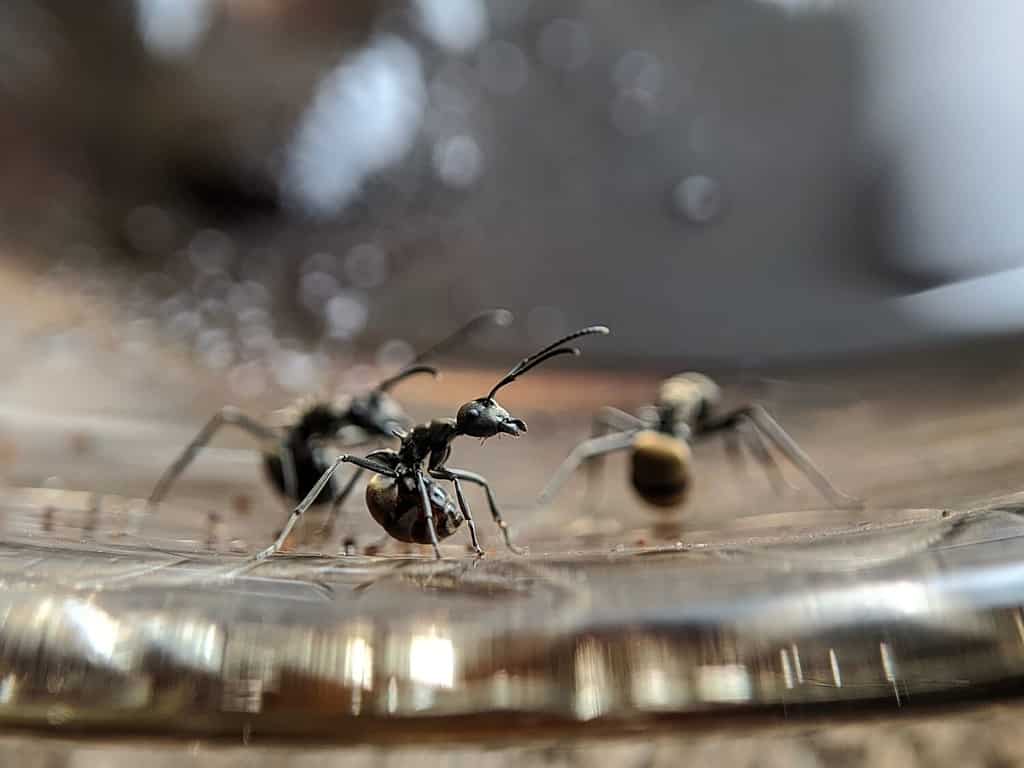
Blue jays seem to know to wipe formic acid off ants before eating them.
©Dhe Tong/Shutterstock.com
As we mentioned just before, blue jays sometimes eat ants, and there is something weird they do before eating. This practice is known as “anting,” and it involves wiping the ants across their feathers as if they were having a bath.
The practice has remained largely inexplicable, but some scientists have posited that blue jays do this to rid the ants of formic acid so that they can proceed to eat them without any harm. A study even corroborated this belief when it revealed that blue jays eat mostly “ant” ants that have formic acid. In the research, the formic acid of some ants was removed, and the blue jays proceeded to eat them immediately without anting.
In our words, we would say it is a mysterious yet comical practice. You’ve got to admit – it’s pretty funny to watch a bird “bathe” with its prey before eating. Feels like a diabolical practice or some black magic ritual, wouldn’t you agree?
6. Blue Jays Actually Live Long
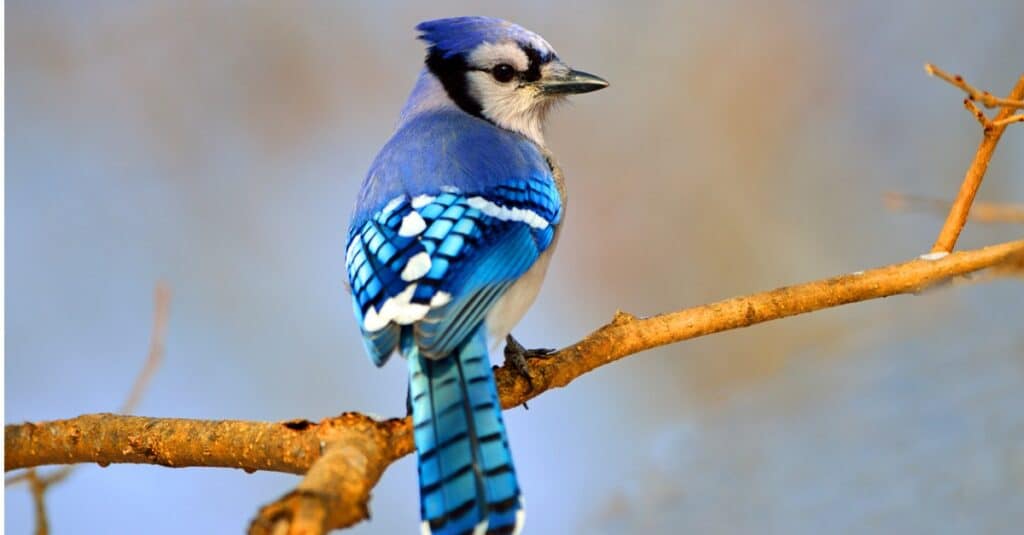
Blue jays are among the longest-living songbirds in the wild.
©iStock.com/BrianEKushner
Blue jays are among the longest-living songbirds in the wild. On average, they live up to seven years, which is pretty long for a bird. As a matter of fact, the oldest known blue jay in the wild lived for 17½ years, while a captive female blue jay once lived for 26 years and 3 months.
It is not very common to see birds being alive well into their teenage years, but some blue jays have been there, done that, and even surpassed them on some occasions.
7. Blue Jays Love Acorns
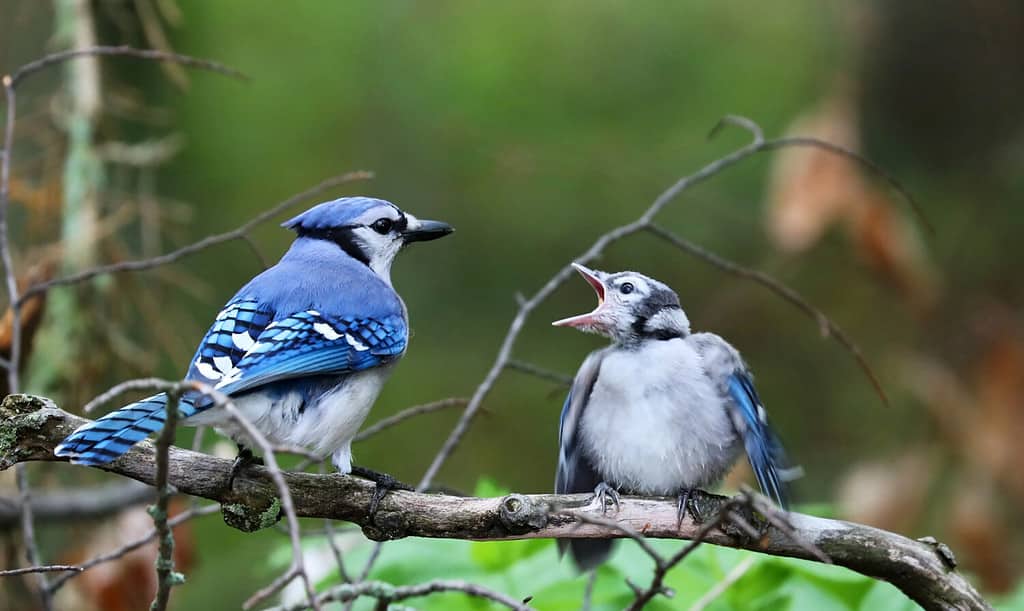
Blue jays love oak trees because their favorite food is acorns.
©Karel Bock/Shutterstock.com
If you could speak to a blue jay and ask what its favorite food is, there is a 99% chance it would say “acorns.” Besides being on forest edges, blue jays also love to be near oak trees because of the easy access to acorns from there.
They also tend to store food, especially acorns, for later. Since they are naturally skilled at picking out the best acorns, blue jays would try to fly with up to five of them at once, not just to eat but also to store. Research shows that a blue jay may store as much as 3,000 acorns in one fall. Smart little birds, right?
8. Blue Jays Have A Variety Of Sounds
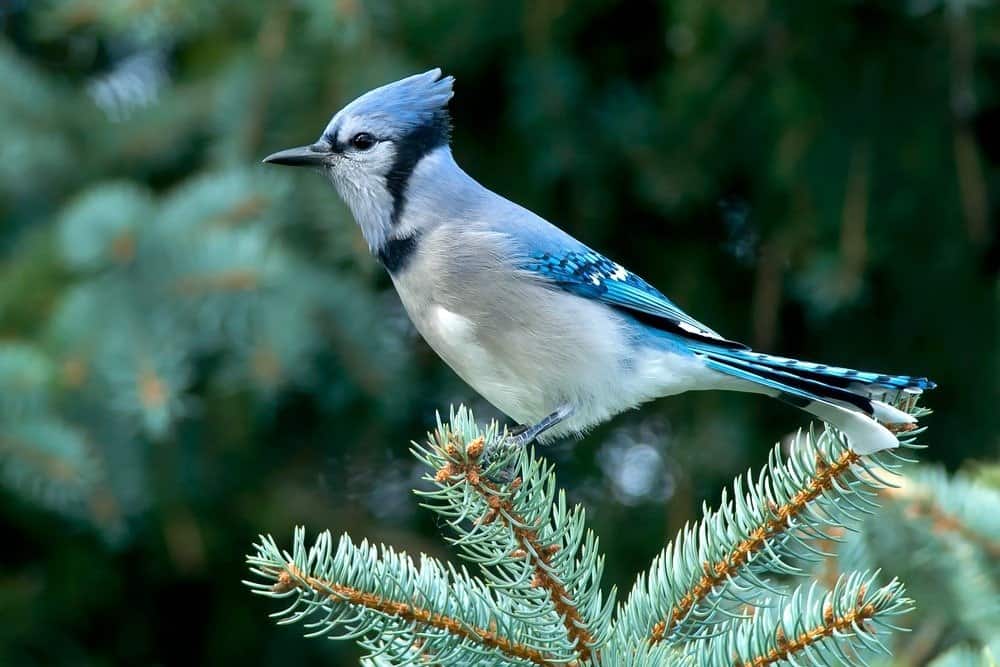
A Blue Jay is capable of mimicry – including mimicking hawks to scare other birds from a bird feeder.
©Paul Reeves Photography/Shutterstock.com
Besides their natural gift of mimicry, blue jays also make a lot of sounds, from quiet, sweet-sounding chirps in the morning to loud, discordant squawks in the evening. They also make loud jeers, whistled notes, as well as gurgles. In fact, they got their name from the jay-jay sound they often make.
Many of these sounds have been observed to be communications with other birds, although they have not been successfully deciphered.
9. Blue Jays Have Their Own Version Of Nuclear Families
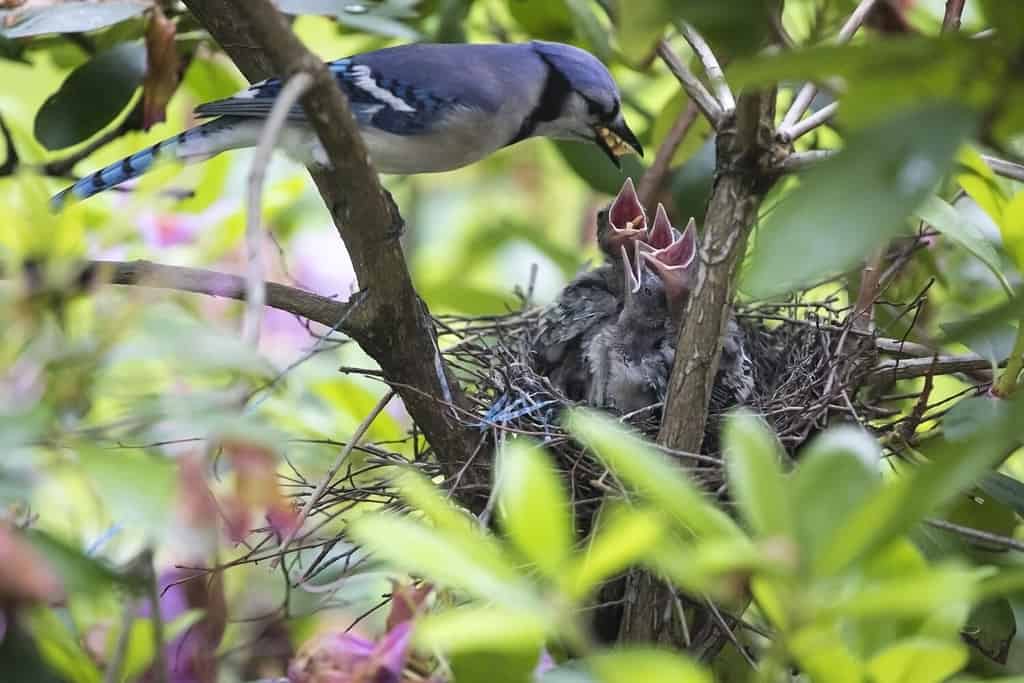
Blue jays are predisposed to building a family of some sort.
©Cytis77/Shutterstock.com
Not only are they largely monogamous, but blue jays are also predisposed to building a family of some sort. Male and female blue jays have been observed to work together in building nests for their young (hatchlings). Since the parents are basically life mates, they would live together and even migrate together when they feel the need to.
10. Blue Jays Have Unstable Migration Patterns
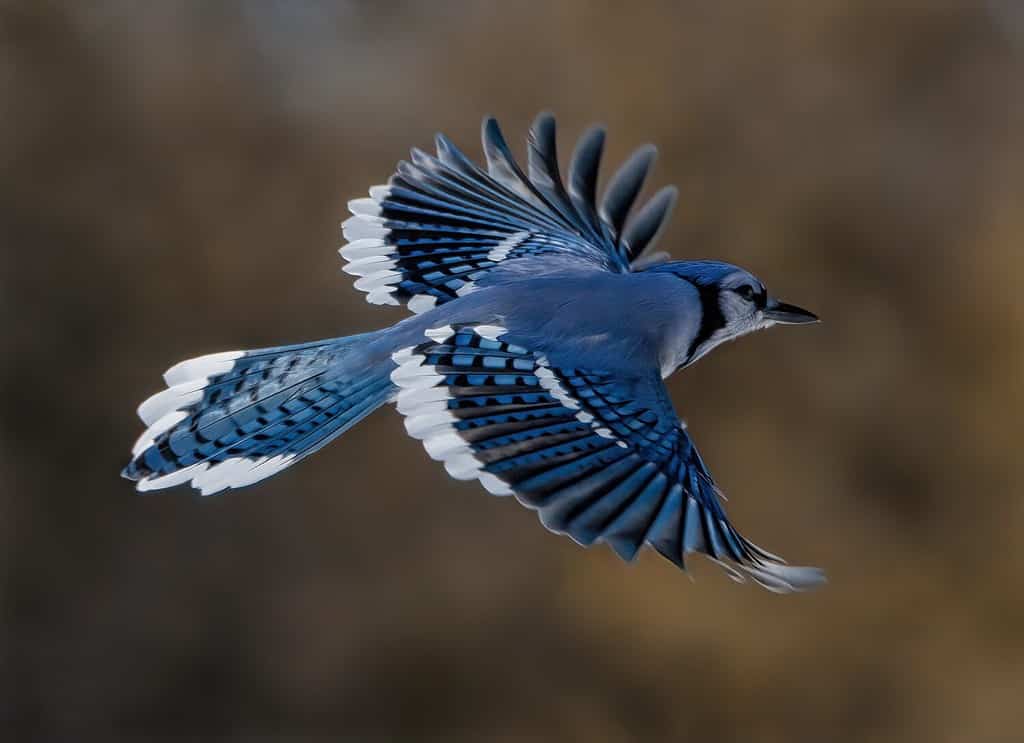
It seems that blue jays decide to migrate according to their individual needs.
©Fiona M. Donnelly/Shutterstock.com
There is no doubt that blue jays are predisposed to migration. However, there is a weird variation in their migration patterns. While some blue jays choose to stay in one place for a whole year, others would migrate sometime within the year.
Some blue jays, usually the ones who migrate individually, would migrate south one year (mostly during winter) and just remain there for the next year. Some studies show that younger blue jays are more likely to migrate, while the older ones are often content with staying in the same place.
The photo featured at the top of this post is © iStock.com/BrianEKushner
Thank you for reading! Have some feedback for us? Contact the AZ Animals editorial team.






